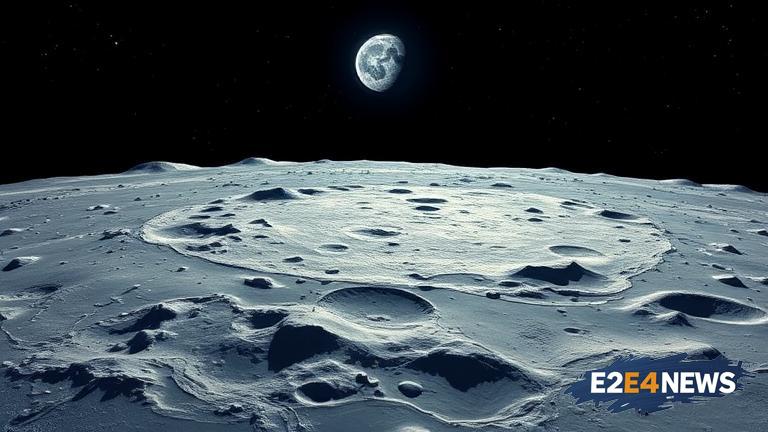India’s space agency, the Indian Space Research Organisation (ISRO), is preparing for its third lunar mission, Chandrayaan-3, which aims to land near the lunar south pole. The mission is a follow-up to the successful Chandrayaan-1 and Chandrayaan-2 missions, which were launched in 2008 and 2019, respectively. The Chandrayaan-3 mission is expected to launch in 2023 and will include a lunar lander and rover, which will conduct scientific experiments on the lunar surface. The mission will focus on the lunar south pole, which is a region of great interest to scientists due to its potential for water ice and other resources. The lunar south pole is also a challenging region to explore, with its rugged terrain and extreme temperatures. The Chandrayaan-3 mission will be launched on a Geosynchronous Satellite Launch Vehicle (GSLV) rocket from the Satish Dhawan Space Centre in Sriharikota, India. The mission will include a lunar orbiter, lander, and rover, which will work together to conduct scientific experiments and gather data on the lunar surface. The lunar lander will be equipped with a suite of instruments, including a seismometer, a laser-induced breakdown spectrometer, and a radar instrument. The rover will be equipped with a similar suite of instruments and will be designed to move around the lunar surface and conduct experiments. The Chandrayaan-3 mission is expected to provide valuable insights into the geology and composition of the lunar south pole, as well as the potential for water ice and other resources. The mission will also help to advance India’s space program and demonstrate its capabilities in space exploration. The Chandrayaan-3 mission is a significant step forward for India’s space program, which has been growing rapidly in recent years. India has already launched several successful missions to the moon, including the Chandrayaan-1 and Chandrayaan-2 missions, and is planning to launch several more missions in the coming years. The Chandrayaan-3 mission is also a significant step forward for international cooperation in space exploration, as it will include contributions from several international partners. The mission will be launched in 2023 and is expected to last for several weeks, during which time it will conduct a series of scientific experiments and gather data on the lunar surface. The Chandrayaan-3 mission is a major milestone for India’s space program and is expected to provide valuable insights into the lunar south pole and its potential for water ice and other resources. The mission will also help to advance our understanding of the moon and its place in the solar system. The Chandrayaan-3 mission is a significant achievement for India’s space program and demonstrates its capabilities in space exploration. The mission is expected to inspire future generations of scientists and engineers and to contribute to the advancement of space exploration. The Chandrayaan-3 mission is a major step forward for India’s space program and is expected to provide valuable insights into the lunar south pole and its potential for water ice and other resources. The mission will also help to advance our understanding of the moon and its place in the solar system. The Chandrayaan-3 mission is a significant achievement for India’s space program and demonstrates its capabilities in space exploration. The mission is expected to inspire future generations of scientists and engineers and to contribute to the advancement of space exploration. The Chandrayaan-3 mission is a major milestone for India’s space program and is expected to provide valuable insights into the lunar south pole and its potential for water ice and other resources. The mission will also help to advance our understanding of the moon and its place in the solar system. The Chandrayaan-3 mission is a significant achievement for India’s space program and demonstrates its capabilities in space exploration. The mission is expected to inspire future generations of scientists and engineers and to contribute to the advancement of space exploration. The Chandrayaan-3 mission is a major step forward for India’s space program and is expected to provide valuable insights into the lunar south pole and its potential for water ice and other resources. The mission will also help to advance our understanding of the moon and its place in the solar system. The Chandrayaan-3 mission is a significant achievement for India’s space program and demonstrates its capabilities in space exploration. The mission is expected to inspire future generations of scientists and engineers and to contribute to the advancement of space exploration.
